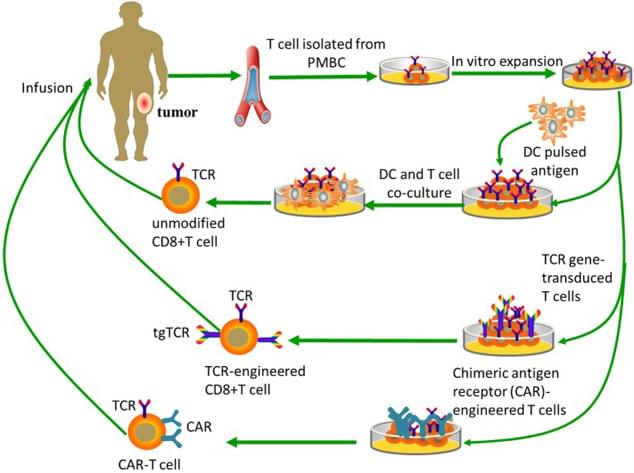Target Background
IL-11Rα (interleukin 11 receptor subunit α), which is validated as the receptor binding the IL11-peptide mimetic CGRRAGGSC, is a stromal cell-derived cytokine with an extracellular region composed of an immunoglobulin-like domain and a cytokine receptor-like domain. Accumulative evidences prove that the significantly enhanced IL-11Rα expression correlates with human prostate malignancy and osteosarcoma (OS). Its expression level is low in normal organ tissues despite the gastrointestinal tract. Therefore, the functional roles of IL-11Rα in the growth and metastasis of OS and prostate cancer make it a valuable and novel target for the development of CAR-specific T-cell therapy.
Anti- IL-11Rα CAR-T Cell Therapy
Despite the improved prognosis of combining treatment of surgery and chemotherapy, the advanced, metastatic or recurrent OS are still in urgent need of novel efficient therapeutic methods. Several efforts have been spent to explore the use of CAR-T therapy in preclinical models to treat sarcomas by targeting interleukin-11 receptor α chain. However, the clinical study of anti-IL-11Rα CAR-T cell therapy has not been reported up to now, even the preclinical studies are very limited. Therefore, Creative Biolabs helps researchers capture the brighter and prosperous future of anti-IL-11Rα CAR-T cell therapy.
 Fig.1 Tumor-specific T-cell-based immunotherapy.1
Fig.1 Tumor-specific T-cell-based immunotherapy.1
Animal Models for in vivo Study of anti-IL-11Rα CAR-T Cell Therapy
Creative Biolabs offers researchers almost all the animal models (murine, canine, etc.) generated from the major techniques including the conventional carcinogen-induced models, the secondary OS models after radiation, the mosaic transposon- or virus-induced models, the transgenic models and the subcutaneous or patient-derived xenograft models for a variety of OS and prostate cancers.
Furthermore, Creative Biolabs is always passionate about introducing our well-established animal models to in vivo tests of adoptive cell therapy and providing assistance in creating the most clinically relevant animal models with customized requirements.
In vivo Assay Parameters and Techniques
At Creative Biolabs, we offer the most exquisite and comprehensive service platform for preclinical IL-11Rα CAT-T cell therapy research.
Efficacy Test
Tumor remission monitored by tumor volume recording or bioluminescence imaging and survival curve tracking
Viability and Bio-distribution Studies
Durability, bio-distribution studies
Toxicity Evaluation
Pilot tolerability (MTD, The route of administration, Dose regimen/response/onset)
Clinical observation (body weight, feed consumption, ophthalmologic and clinical pathology)
Cytokine storm surveillance (fever, hypertension, prolonged cytopenia)
Complete necropsy, organ weight
Histopathology
Tumorigenicity study
To extend the fundamental capabilities of CAR-T cell therapy to all the potential targets, Creative Biolabs is dedicated to creating the most scientific pre-clinical assay design in vivo with the most clinically relevant animal models with the consideration of every elementary detail to innovate the prosperous future of CAR-T cell therapy for concrete utility.
Reference
For any technical issues or product/service related questions, please leave your information below. Our team will contact you soon.
All products and services are For Research Use Only and CANNOT be used in the treatment or diagnosis of disease.
 NEWSLETTER
NEWSLETTER
The latest newsletter to introduce the latest breaking information, our site updates, field and other scientific news, important events, and insights from industry leaders
LEARN MORE NEWSLETTER NEW SOLUTION
NEW SOLUTION
CellRapeutics™ In Vivo Cell Engineering: One-stop in vivo T/B/NK cell and macrophage engineering services covering vectors construction to function verification.
LEARN MORE SOLUTION NOVEL TECHNOLOGY
NOVEL TECHNOLOGY
Silence™ CAR-T Cell: A novel platform to enhance CAR-T cell immunotherapy by combining RNAi technology to suppress genes that may impede CAR functionality.
LEARN MORE NOVEL TECHNOLOGY NEW SOLUTION
NEW SOLUTION
Canine CAR-T Therapy Development: From early target discovery, CAR design and construction, cell culture, and transfection, to in vitro and in vivo function validation.
LEARN MORE SOLUTION

